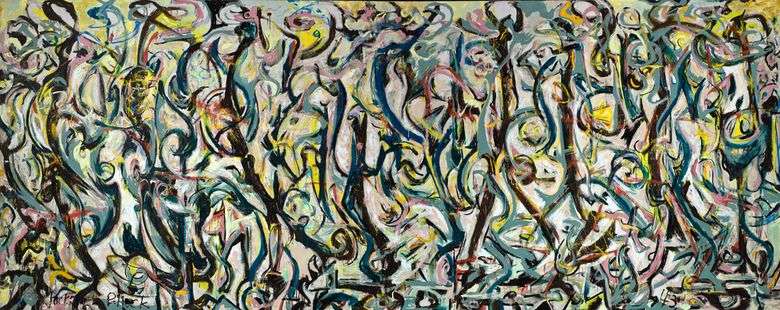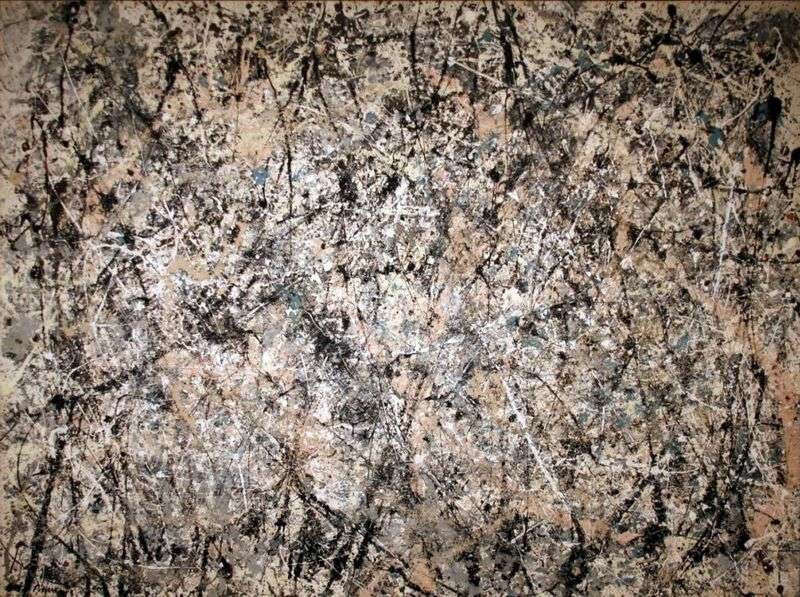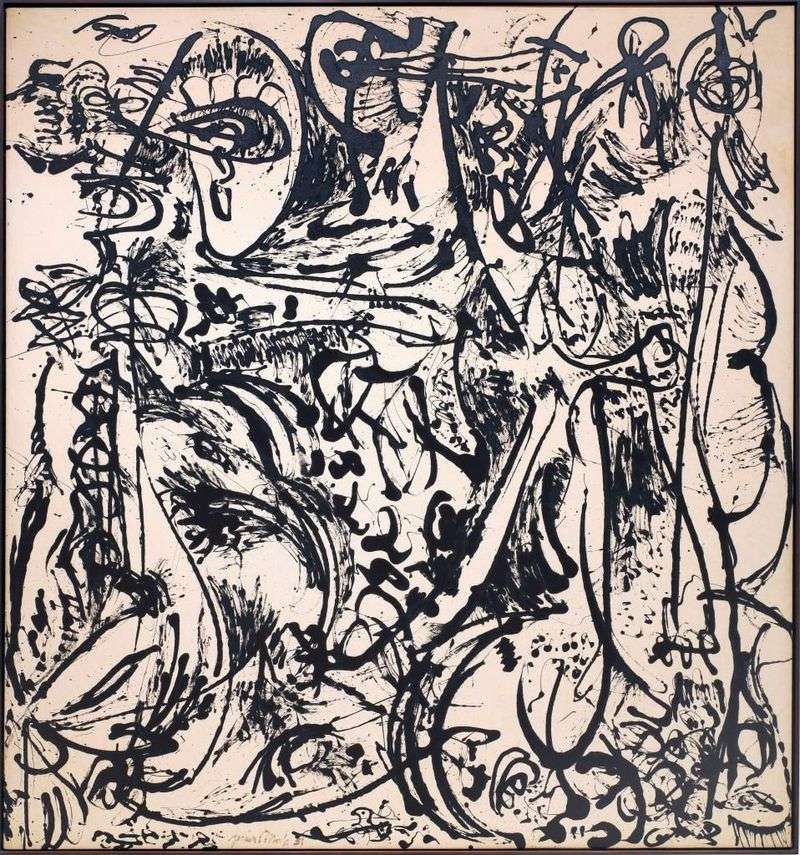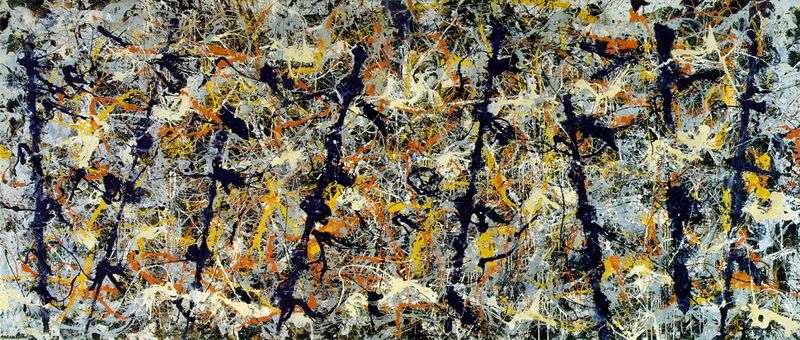
Around 1950, Pollock drew general attention to himself with his huge paintings created in the new technique – the artist himself called his invention “drip painting.” These pictures were liked by some viewers, caused bewilderment in others, were categorically rejected by the third.
Unusual was not only the style, but also the size of the paintings themselves. I must say that before his meeting with Peggy Guggenheim, which occurred in 1943, Pollock wrote the usual format of the canvas. When the Guggenheim ordered him a wall painting for his house, the famous surrealist Marcel Duchamp advised the young artist to write not on plaster, but on canvas.
For several months Pollock, who had never done such work before, considered the future work, sitting for long hours in front of an absolutely clean canvas – as the order demanded, gigantic, 6 by 2.7 meters. At the same time, according to Lee Krasner, he “gradually fell into a real depression.” But then, literally in one night, the artist fulfilled the order, writing a monumental canvas called “Fresco”. Since then, the gigantic dimensions of the picture have become a distinctive feature of Pollock art.
 Summer by Jackson Pollock
Summer by Jackson Pollock Mural – Jackson Pollock
Mural – Jackson Pollock Lavender Mist by Jackson Pollock
Lavender Mist by Jackson Pollock Echo by Jackson Pollock
Echo by Jackson Pollock Number 1A by Jackson Pollock
Number 1A by Jackson Pollock Blue Poles by Jackson Pollock
Blue Poles by Jackson Pollock Autumn Rhythm by Jackson Pollock
Autumn Rhythm by Jackson Pollock Keepers of Secrets by Jackson Pollock
Keepers of Secrets by Jackson Pollock